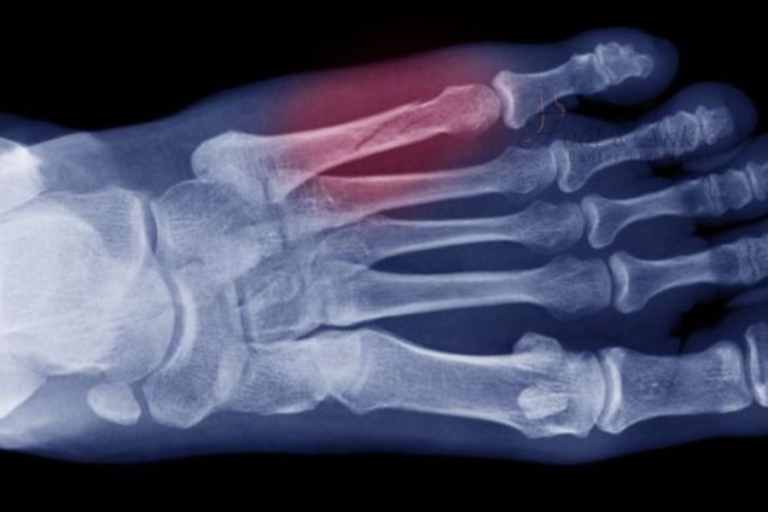Football is a high-impact sport that places tremendous stress on the lower extremities, particularly the foot and ankle. The sport involves quick pivots, sprinting, abrupt stops, and full-contact tackling, all of which increase the risk of injury. Understanding the nature of these injuries is crucial for players, coaches, and healthcare providers.
1. Acute Injuries
Ankle Sprains and Ligament Damage
Inversion ankle sprains are among the worst football injuries, often affecting the lateral ligaments. Severe cases may also involve the peroneal tendons or result in bone avulsion or ligament tears.
Fractures
Football players are at risk for:
- Ankle fractures: Can occur from forceful tackles or twisting injuries.
- Metatarsal fractures: Often due to direct trauma or repetitive stress.
- Lisfranc fractures: Midfoot injuries that are serious and frequently missed.
- Turf toe: Hyperextension injury to the big toe joint, typically occurring on artificial turf fields.
Bone Bruises and Contusions
Direct impact during tackles may cause bone bruises or deep tissue contusions, which can be painful and debilitating if untreated.
2. Chronic and Overuse Injuries
Plantar Fasciitis
Repetitive stress on the heel and arch can lead to inflammation of the plantar fascia, causing sharp heel pain, especially in the morning or after activity.
Achilles Tendonitis
This condition is common in players who sprint frequently or increase training intensity too quickly.
Posterior Tibial Tendon Dysfunction (PTTD)
Often overlooked, this injury affects the tendon supporting the arch, leading to flatfoot deformity and instability.
Sesamoiditis
Inflammation of the small sesamoid bones under the big toe can result from repeated forefoot pressure during sprints or pushing off.
Stress Fractures
These hairline cracks are common in the metatarsals and tibia and are often related to overtraining.
Calcaneal Apophysitis
Seen in adolescent athletes, this condition (also known as Sever’s disease) is caused by inflammation of the heel’s growth plate.
3. Risk Factors
Several factors contribute to foot and ankle injuries in football:
- Worn or ill-fitting cleats
- Poor running mechanics or ankle instability
- Hard or artificial playing surfaces
- Lack of flexibility or muscular imbalances
4. Diagnosis and Evaluation
Early diagnosis is key. Clinical exams often include:
- Physical inspection and palpation
- Range of motion and strength testing
- Imaging such as X-rays for fractures or MRI for soft tissue injuries
5. Treatment Options
Non-Surgical Treatments
- R.I.C.E.: Rest, Ice, Compression, Elevation
- Bracing or taping to support the joint
- NSAIDs for pain and inflammation
- Physical therapy to restore range of motion and strength
Surgical Interventions
In cases of severe fractures, ligament tears, or failed conservative care, surgery may be necessary. Procedures might include internal fixation, tendon repair, or joint stabilization.
6. Rehabilitation and Return to Play
A structured rehab program is vital. It includes:
- Gradual load-bearing exercises
- Balance and proprioception training
- Functional drills simulating sport-specific movements Athletes must be cleared by medical professionals before returning to full participation.
7. Prevention Strategies
- Wear properly fitted, sport-specific footwear
- Use orthotic inserts if needed
- Warm up dynamically before play
- Incorporate ankle strengthening and balance drills into training
- Monitor training loads to avoid overuse
8. Youth Athletes: Special Considerations
Children and adolescents are more prone to growth plate injuries. Coaches and parents must be vigilant about complaints of pain, especially if persistent, as early intervention is crucial to prevent long-term issues.
9. Conclusion
Foot and ankle injuries in football are common but can often be prevented and effectively managed. Recognizing the signs early, seeking prompt treatment, and adhering to a personalized rehabilitation plan are essential for full recovery and long-term athletic success.




